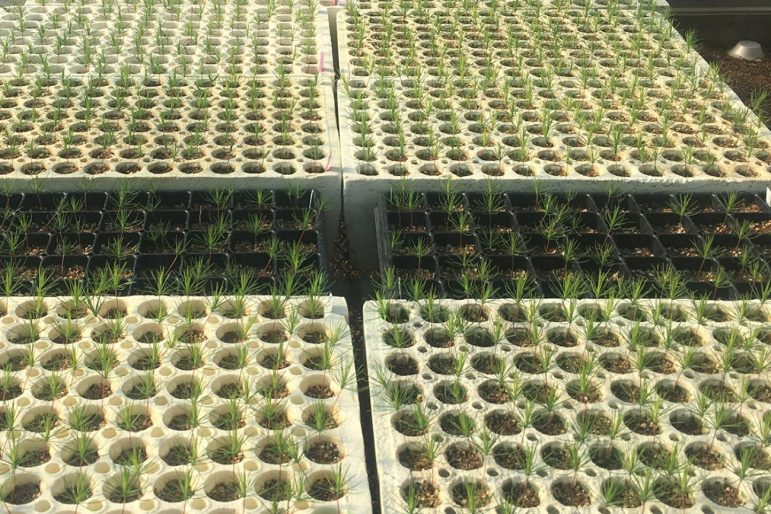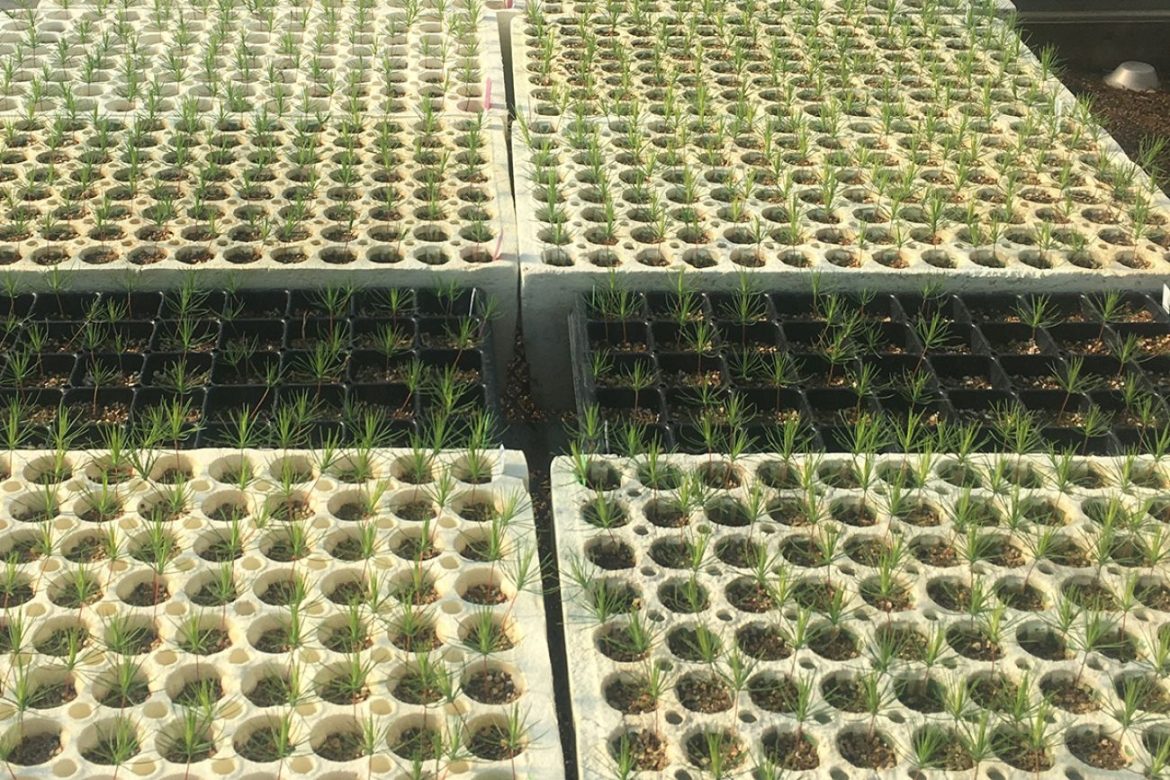
By Emilio Perez Ibarguen
As Michigan’s climate warms, tree species like red pine and eastern white pine may no longer thrive here. Their native regions are moving north faster than forests can keep up with.
That could have devastating consequences for Michigan’s $26.5 billion timber industry and rob the state of the ecological services the forest provides like carbon storage, water filtration and wildlife habitats.
To help forests stand a chance, Michigan State University forest genetics assistant professor Jeremy Johnson is experimenting with “assisted tree migration.”
The idea: Plant trees in warmer regions now and identify the ones with traits that can handle the future climate.
“We can improve the genetic gain in those trees and start an orchard where we have seed that is adapted to the future climates,” Johnson said. “And that’ll allow the species to persist in the future projected climates.”
Johnson is backed by a $500,000 grant from the Department of Natural Resources, which he’ll use to plant thousands of trees — representing six conifer species and the American chestnut — at nine sites across the state and spend the next 20 years tracking their performance.
Each of the sites, spread across the western Upper Peninsula, northern Lower Peninsula and southern Lower Peninsula, will expose the trees to different soil and climate conditions.
By the end, Johnson hopes to find individual trees with traits that help them survive in the simulated conditions. Their seeds can then be planted on the edges of existing forests where they can cross-pollinate with other trees and spread those traits, making the forests more resilient to rising temperatures.
The study will also look at how tree species currently thriving further south, like the shortleaf pine, hold up in Michigan.
They’ll spend the first two years of their lives being grown at MSU’s Tree Research Center Greenhouse before being dispersed across the state. Researchers will assess their height, diameter and biological clock — indicators of their performance — over the next two decades.
Bridge Michigan spoke recently with Johnson as he takes the first steps in the project. Here are excerpts from the conversation.
Q: How does assisted tree migration help prepare us for dealing with climate change?
With red pine we’re at the southern end of the range and for eastern white pine we’re somewhere in the middle. So, if we wanted to keep red pine within the composition of forests in Michigan, we need to be able to identify genotypes — individuals within the population of red pine at its southern end — that are going to be pre-adapted to future climates.
Now we tend to think about forests as being sort of these monolithic entities that move and sort of respond uniformly to changes in the environment. And that’s just not true. There’s a lot of variation that exists in trees.
Some will be more drought-tolerant, some will be less drought-tolerant or cold-hardy, and so we plant all of those to identify those trees that are the most fit for the future projected climates.
And then we can select those trees that grew the best, and we can use those in breeding so they’ve got genes that make them more fit.
So if we take the two elite trees, the two best adapted trees to the future environments, and then do a full cross-pollen to the seed, then we can improve the genetic gain in those trees and start an orchard, basically, where we have seed that is adapted to the future climates, and that’ll allow the species to persist.
Q: So, even if rising temperatures mean these trees find themselves outside their native range, they’re going to be OK because you’ve identified these traits that allow them to be more resilient?
That’s right, exactly. And then the whole process of tree breeding is that you can increase that genetic potential in those adaptive traits within the population, and so that they become more fit. You’re just sort of helping nature maintain those species as the environment changes much more rapidly than what they have responded to and passed from an evolutionary perspective (in the past).
Q: How do different soil types play into this?
So, a lot of tree species will be adapted to particular soil types, whether that soil is well-drained, acidic or basic. It’s a different environmental force or a different environmental factor that’s interacting with those genotypes.
We have the climate gradation, but then also we have these three soil types. So it’s going to be xeric (dry), sort of dry and then wet. And so we plant all of those same open pollinated seedlings across these various sites and see how they respond.
Q: You were originally hoping to include more tree species in the study, ultimately landing on seven. Why these seven?
That was a co-production of science with the DNR and other stakeholders, where we wanted to have the important timber species included in there, like the red pine, jack pine, eastern white pine.
And then we were looking at functional equivalents. Hypothetically, none of these trees have any adaptive potential — they’re all going to disappear from the landscape. So, what kinds of trees would serve the same roles as those trees?
From a conifer perspective, we were looking at things like shortleaf pine, Virginia and pitch pine, and that’s because of their growth habits, the type of conditions they might be growing in and the fact that they would fit that same function as a red pine.
And so then we can kind of move these southern pines further north, and they match the future climates.
We’re trying to look at all of these different ideas about what would potentially be a viable solution if we start to see the decline of forests, I’m hoping that there’s a lot of intraspecies variation in trees, and that we will identify more superior genotypes. But we won’t know for several years at this point. So, I’m hopeful, but just in case, we want to test the alternatives as well.
Q: How do you measure the success of any given tree?
We’ll go in there, and we’re measuring survival. Are they still alive in this environment? How tall are they? What is the diameter of the trunk, the crown structures, survival and height themselves? Height is usually a really good proxy for fitness overall. Is it growing tall?
It really is going to be which trees are surviving and thriving in these environments, because I suspect that many of them may perform poorly and potentially not survive, but some of them will.
Emilio Perez Ibarguen has an environmental reporting internship under the MSU Knight Center for Environmental Journalism’s diversity reporting partnership with the Mott News Collaborative in cooperation with Capital News Service. This story was produced for Bridge Michigan.
